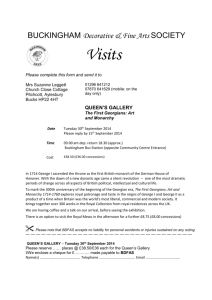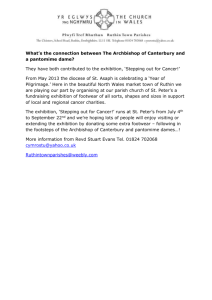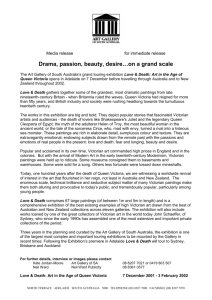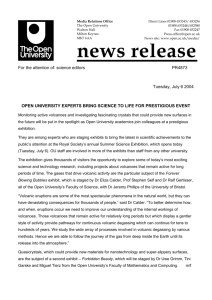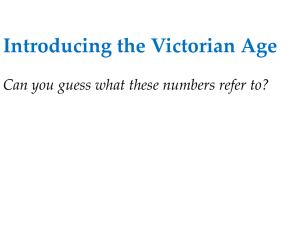George III and Queen Charlotte: Patronage
advertisement
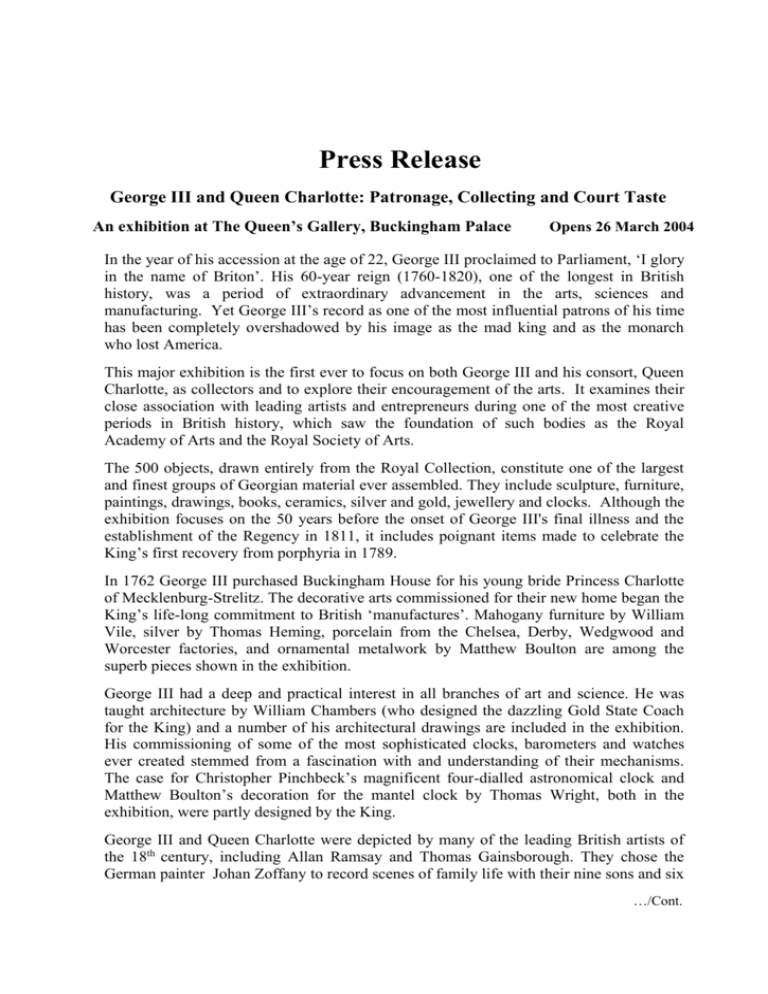
Press Release George III and Queen Charlotte: Patronage, Collecting and Court Taste An exhibition at The Queen’s Gallery, Buckingham Palace Opens 26 March 2004 In the year of his accession at the age of 22, George III proclaimed to Parliament, ‘I glory in the name of Briton’. His 60-year reign (1760-1820), one of the longest in British history, was a period of extraordinary advancement in the arts, sciences and manufacturing. Yet George III’s record as one of the most influential patrons of his time has been completely overshadowed by his image as the mad king and as the monarch who lost America. This major exhibition is the first ever to focus on both George III and his consort, Queen Charlotte, as collectors and to explore their encouragement of the arts. It examines their close association with leading artists and entrepreneurs during one of the most creative periods in British history, which saw the foundation of such bodies as the Royal Academy of Arts and the Royal Society of Arts. The 500 objects, drawn entirely from the Royal Collection, constitute one of the largest and finest groups of Georgian material ever assembled. They include sculpture, furniture, paintings, drawings, books, ceramics, silver and gold, jewellery and clocks. Although the exhibition focuses on the 50 years before the onset of George III's final illness and the establishment of the Regency in 1811, it includes poignant items made to celebrate the King’s first recovery from porphyria in 1789. In 1762 George III purchased Buckingham House for his young bride Princess Charlotte of Mecklenburg-Strelitz. The decorative arts commissioned for their new home began the King’s life-long commitment to British ‘manufactures’. Mahogany furniture by William Vile, silver by Thomas Heming, porcelain from the Chelsea, Derby, Wedgwood and Worcester factories, and ornamental metalwork by Matthew Boulton are among the superb pieces shown in the exhibition. George III had a deep and practical interest in all branches of art and science. He was taught architecture by William Chambers (who designed the dazzling Gold State Coach for the King) and a number of his architectural drawings are included in the exhibition. His commissioning of some of the most sophisticated clocks, barometers and watches ever created stemmed from a fascination with and understanding of their mechanisms. The case for Christopher Pinchbeck’s magnificent four-dialled astronomical clock and Matthew Boulton’s decoration for the mantel clock by Thomas Wright, both in the exhibition, were partly designed by the King. George III and Queen Charlotte were depicted by many of the leading British artists of the 18th century, including Allan Ramsay and Thomas Gainsborough. They chose the German painter Johan Zoffany to record scenes of family life with their nine sons and six …/Cont. daughters. Interestingly, at the time of the long-running dispute over the American colonies, George III commissioned a series of history paintings from the American artist Benjamin West, whose heroic subject matter reflected the virtues of honour, fortitude and chivalry that he particularly admired. George III’s purchase in 1762 of the celebrated collection formed by the British consul in Venice, Joseph Smith, remains one of the most important acquisitions in the history of the Royal Collection. It encompassed superb Italian paintings and drawings, including works by Raphael, Zuccarelli and Annibale Carracci, and the finest group of Canalettos in existence. The collection also contained outstanding ancient and Renaissance gems, intaglios, medals and books. George III was the most passionate book collector in the history of the monarchy. Although much of the King’s extensive library formed part of the second royal gift to the British Museum in 1823, a number of his notable acquisitions, such as the Sarum Missal of 1497, are shown in the exhibition. Many of the books reflect George III’s greatest interests, such as agriculture and architecture, and are annotated in his hand. As the writer Thomas de Quincy noted, ‘his care extended even to the dressing of the books in appropriate bindings, and…to their health’. The displays include a selection of the King’s bookbinding tools, still in use today. As well as exploring George III as a monarch and man of letters, the exhibition looks at the King as a family man. His domestic life with the Queen and their children is examined through the gifts they exchanged, specially commissioned tableware for tea and coffee drinking, writing sets and gaming pieces. Music was central to the lives of the royal couple, who played a variety of instruments and had a private band. The case of a magnificent claviorgan, a harpsichord and the king’s flute are shown in the exhibition. George III’s enthusiastic pursuit of ‘learning’ was emblematic of the age of enquiry in which he lived. His interest in the great voyages of discovery to new parts of the world is represented in the exhibition by objects presented to him by, among others, Captain James Cook, whose expeditions the King sponsored. While George III and Queen Charlotte shared interests in music, books and the theatre, the Queen pursued her love of botany independently, advised by the leading plantsmen of the day. Her substantial botanical library included the specially bound dedication copy of Lord Bute’s Botanical tables, shown in the exhibition within its own decorated cabinet. The Queen also gathered around her and supported a number of women artists, such as Mary Delany and Mary Knowles, and encouraged her own daughters’ artistic talents. George III and Queen Charlotte: Patronage, Collecting and Court Taste The Queen’s Gallery, Buckingham Palace 26 March 2004 – 9 January 2005 Further information is available from Public Relations and Marketing, the Royal Collection, telephone: 020-7839 1377, e-mail: press@royalcollection.org.uk Images are available from the Royal Collection’s folder in the Arts section on PA’s Picselect at www.papicselect.com or through the PA bulletin board. Note to Editors George III was born on 4 June 1738, the eldest son of Frederick, Prince of Wales, and Princess Augusta of Saxe-Gotha. He became heir to the throne on the death of his father in 1751, succeeding his grandfather, George II, in 1760. He was the first Hanovarian monarch to be born in England and to use English as his first language. Ends.
